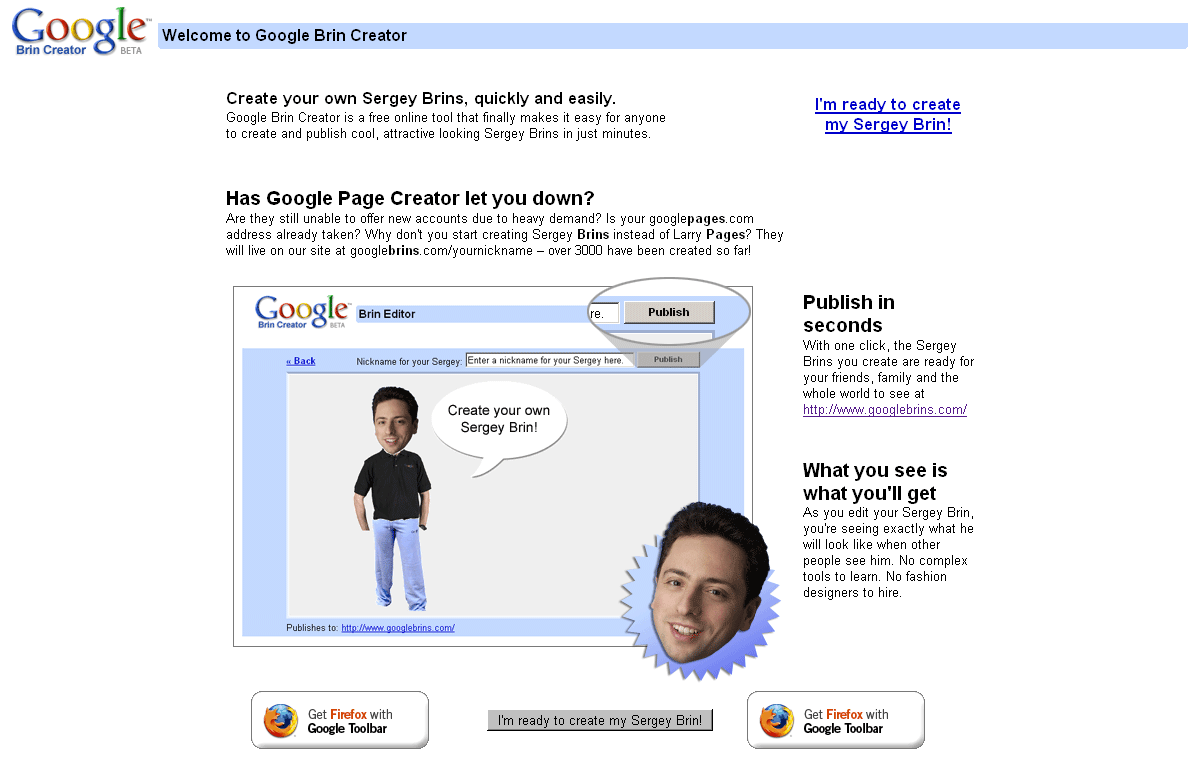Crafting a compelling personal brand is no longer optional; it’s essential for professionals seeking to stand out and attract clients in today’s competitive market. This guide dives deep into the multifaceted strategies for building a personal brand that resonates with your target audience. From defining your unique value proposition to building a robust online presence, we’ll explore actionable steps to create a brand that truly attracts clients.
This comprehensive guide breaks down the process into seven key areas. First, we’ll examine how to clearly articulate your unique value proposition and identify your ideal client. Next, we’ll explore the art of crafting a compelling personal brand story, and how to effectively leverage online platforms. The guide then delves into crucial content creation strategies, followed by networking and relationship-building tactics.
Finally, we’ll discuss how to measure and adapt your strategy for ongoing success.
Defining Your Unique Value Proposition
A strong personal brand hinges on a compelling Unique Value Proposition (UVP). This isn’t simply a list of services; it’s a concise articulation of the distinct value you bring to your clients. It highlights your unique strengths and how they solve their specific problems or needs. A well-defined UVP acts as a magnet, attracting ideal clients who resonate with your offering.Crafting a powerful UVP requires understanding your target audience and what truly sets you apart.
It’s about translating your expertise into a clear, concise, and actionable message that speaks directly to their pain points. By understanding your UVP, you can focus your marketing efforts, attract the right clients, and build a successful personal brand.
Understanding Unique Value Proposition (UVP)
A Unique Value Proposition (UVP) is a concise statement that highlights the unique benefits a person or business offers to their target audience. It differentiates them from competitors by focusing on what makes them special and how they solve a problem for the customer. A strong UVP clearly articulates the value proposition and creates a compelling reason for customers to choose them.
Examples of Compelling UVPs
These examples demonstrate how a UVP can be tailored to different professional fields:
- Marketing Consultant: “I help small businesses achieve rapid growth by developing data-driven marketing strategies tailored to their specific goals and budget.” This UVP focuses on measurable results, a key benefit for potential clients.
- Freelance Writer: “I craft compelling, -optimized content that drives traffic and converts readers into customers for businesses in the tech industry.” This UVP is targeted to a specific niche, emphasizing both quality and practical results.
- Life Coach: “I empower individuals to achieve their personal and professional goals through practical strategies and techniques that promote sustainable change.” This UVP highlights the coach’s ability to provide actionable solutions and lasting impact.
Comparing Approaches to Defining a UVP
Different approaches to defining a UVP can be categorized based on their focus and methodology.
| Approach | Focus | Methodology | Example |
|---|---|---|---|
| Problem-Solution | Identifying a specific problem and presenting a solution. | Analyze client needs, identify pain points, and propose tailored solutions. | “I help overwhelmed entrepreneurs streamline their business processes, saving them time and money.” |
| Benefit-Driven | Highlighting the positive outcomes and benefits for clients. | Focus on the tangible and intangible results clients gain from working with you. | “Unlock your potential and achieve your career goals with personalized guidance and support.” |
| Niche-Focused | Targeting a specific, well-defined market segment. | Identify a particular industry, customer type, or need that you specialize in. | “I specialize in helping start-up SaaS companies develop their social media strategies.” |
Identifying Your Unique Strengths and Expertise
Identifying your unique strengths and expertise is crucial for crafting a compelling UVP. These strengths are the foundation upon which you can build your personal brand. The following questions can guide you in identifying your unique value:
- What are your core skills and competencies?
- What problems do you excel at solving?
- What are your most significant accomplishments?
- What unique experiences have shaped your expertise?
- What are your most valuable qualities and characteristics?
- What industry or niche are you passionate about?
- What specific results can you demonstrate?
- What sets you apart from competitors?
Identifying Your Ideal Client
Understanding your ideal client is crucial for building a successful personal brand. Knowing who you’re trying to reach allows you to tailor your message, offerings, and marketing efforts to resonate most effectively with your target audience. This focused approach not only increases your chances of attracting the right clients but also helps you establish a strong, recognizable brand identity.A clear understanding of your ideal client empowers you to create a compelling value proposition that directly addresses their needs and pain points.
This in turn fosters stronger relationships and ultimately drives more successful outcomes.
Importance of Ideal Client Understanding
A deep understanding of your ideal client is fundamental to a successful personal brand. It ensures your efforts are aligned with the needs of your target audience, optimizing your resources and increasing your impact. This targeted approach fosters stronger connections and builds a recognizable brand identity.
Methods for Researching Ideal Client Needs
Thorough research into your ideal client’s needs, pain points, and preferences is vital. This research should involve various methods to gain a comprehensive understanding of their motivations, challenges, and desires.
- Market Research: Analyzing industry trends, competitor offerings, and customer reviews provides valuable insights into prevailing needs and challenges within your target market. This approach can identify unmet needs and emerging trends that your brand can leverage.
- Surveys and Questionnaires: Directly asking potential clients about their needs, pain points, and preferences through surveys and questionnaires allows for a targeted understanding of their specific requirements. This approach helps pinpoint their frustrations and motivations.
- Interviews and Focus Groups: Conducting in-depth interviews and focus groups with your ideal client can provide qualitative data and detailed insights into their perspectives. These methods can reveal deeper motivations and hidden concerns that quantitative data might miss.
- Social Media Analysis: Examining social media platforms frequented by your target audience provides insights into their interests, language, and communication styles. This helps tailor your brand voice and messaging to resonate more effectively.
Segmenting Your Ideal Client Base
Segmenting your ideal client base based on demographics, psychographics, and behaviors allows for a more nuanced understanding of your target audience. This stratification enables you to create personalized messaging and tailor your brand to specific segments within your target market.
- Demographics: This involves classifying your ideal client based on observable characteristics like age, gender, location, income, and education level. Understanding demographic factors helps tailor your brand’s marketing strategies to the most relevant channels and messaging styles.
- Psychographics: This delves into the psychological characteristics, values, interests, and lifestyles of your ideal client. Psychographic data provides insight into their motivations, aspirations, and concerns, enabling you to tailor your brand’s messaging to resonate more deeply.
- Behaviors: This focuses on analyzing the purchasing habits, online activities, and interactions of your ideal client. Understanding their behaviors enables you to identify the channels and methods that are most effective for reaching and engaging them.
Creating a Detailed Client Persona
A detailed client persona is a fictional representation of your ideal client, encompassing demographics, psychographics, and behaviors. This detailed profile is crucial for visualizing your target audience and understanding their needs.
- Gather Data: Collect data from the methods discussed previously to construct a comprehensive profile.
- Develop a Fictional Representation: Create a name, background, and story for your ideal client, incorporating the collected data.
- Define Needs and Pain Points: Articulate the specific needs, goals, and pain points of your ideal client. Describe their motivations and aspirations in detail.
- Identify Motivations and Values: Pinpoint the values, aspirations, and motivations that drive your ideal client. This understanding is crucial for crafting messaging that resonates with them.
- Describe Lifestyle and Preferences: Describe your ideal client’s lifestyle, including their interests, hobbies, and preferences. This creates a more holistic picture of your target audience.
Crafting a Compelling Personal Brand Story
A compelling personal brand story is the cornerstone of attracting ideal clients. It’s more than just a resume; it’s a narrative that showcases your unique value proposition, connects with your target audience on an emotional level, and builds trust and credibility. A well-crafted story allows potential clients to envision themselves working with you and experiencing the positive outcomes you can deliver.This narrative should be authentic and reflect your personality and expertise.
It should highlight your journey, achievements, and values, making you memorable and relatable to your target audience. Understanding your personal brand story is a key factor in achieving your professional goals and attracting the right clients.
Strategies for Crafting a Compelling Story
A compelling personal brand story resonates deeply with your target audience. It needs to be more than a list of accomplishments. It should weave together your values, aspirations, and experiences to create a narrative that captivates and inspires trust.
- Highlight your unique value proposition. Identify the specific problems you solve for your clients. This unique value proposition will be the foundation of your brand story. What makes you stand out from the competition? What specific skills and experiences do you possess that differentiate you from others? How can you leverage these assets to deliver outstanding results for your clients?
Showcase how your expertise and experience directly address the needs of your target market.
- Connect your personal values with professional goals. Your personal values should be interwoven into your brand story. How do your core values influence your approach to work and your interactions with clients? This connection builds trust and fosters a genuine connection with your audience. Demonstrate how your values drive your actions and decisions in the professional realm. For example, if integrity is a core value, you can showcase how you maintain transparency and ethical conduct in your work.
- Showcase past achievements and experiences. Quantify your achievements whenever possible. Don’t just say you led a project; explain how you successfully exceeded expectations, reduced costs, or improved efficiency. Use data and metrics to demonstrate the impact of your work. Use specific examples from your past to illustrate how your skills and experience directly benefit clients.
Structuring Your Personal Brand Story
A well-structured narrative makes your story easily digestible and impactful. Employing a clear structure will guide your audience through your journey and help them connect with your unique value proposition.
- Compelling Introduction. Start with a captivating hook that immediately grabs the reader’s attention. This could be a compelling anecdote, a powerful statistic, or a clear statement of your unique value proposition. The introduction should set the stage for the rest of the story and pique the reader’s curiosity.
- Body of the Story. The body of the narrative should detail your journey, highlighting key experiences, challenges overcome, and achievements. This section should showcase your expertise, skills, and the impact you’ve made on previous clients or projects. Explain how your actions and decisions have led to success and positive outcomes.
- Call to Action. Clearly state what you want the reader to do next. Do you want them to schedule a consultation? Visit your website? Connect on LinkedIn? A strong call to action ensures that your story translates into tangible results.
Provide a clear and concise path for potential clients to engage with you and learn more.
Building an Online Presence

A strong online presence is crucial for attracting clients and establishing credibility in today’s digital landscape. Building an online presence is no longer an option, but a necessity for professionals seeking to grow their business. It serves as a virtual storefront, showcasing expertise and building trust with potential clients. This section details essential online platforms and strategies to optimize your online presence for maximum impact.
Essential Online Platforms
A well-rounded online presence leverages multiple platforms to reach a broader audience. This section details key online platforms for building a strong personal brand.
- LinkedIn: A professional networking platform, LinkedIn is vital for connecting with potential clients and industry peers. Building a comprehensive profile that highlights skills, experience, and accomplishments is paramount. Engaging with relevant groups and participating in industry discussions further solidifies your professional image.
- Instagram: A visually-driven platform, Instagram can be exceptionally valuable for showcasing your personality, expertise, and projects. High-quality images and engaging captions can effectively communicate your brand and attract your ideal clients.
- Website: A professional website acts as a central hub for your personal brand. It’s a powerful tool for showcasing your expertise, experience, and offering a way for potential clients to connect directly with you.
- Other relevant platforms: Consider platforms relevant to your industry and target audience. For example, a graphic designer might leverage Behance, while a consultant might use a platform specializing in their specific niche.
The Importance of a Professional Website
A professional website is not merely a digital resume; it’s a critical component of your personal brand. It serves as a central hub for your online presence, allowing you to control the narrative and showcase your unique value proposition. It provides a dedicated space for detailed information, client testimonials, and case studies, which are all crucial elements for building trust and credibility.
Optimizing Your Online Presence
Optimizing your online presence is not a one-time effort; it requires ongoing attention and refinement. It’s a dynamic process that evolves alongside your business goals and client needs. The key lies in consistently creating valuable content, engaging with your audience, and adapting to changing trends.
- Content creation: Regularly publish valuable content relevant to your ideal clients’ needs. This could include blog posts, articles, case studies, videos, or infographics.
- Consistency: Maintaining a consistent brand identity across all platforms is crucial. This includes using the same branding elements, such as logos, colors, and fonts.
- optimization: Optimize your website and content for relevant s to improve search engine rankings and attract organic traffic.
- Engagement: Actively engage with your audience on social media by responding to comments, asking questions, and participating in relevant discussions.
- Tracking analytics: Monitor key metrics to track the effectiveness of your strategies and identify areas for improvement.
Social Media Platform Analysis
This table summarizes the potential uses of different social media platforms in personal branding.
| Platform | Potential Uses |
|---|---|
| Professional networking, industry discussions, sharing expertise, job postings | |
| Visual storytelling, showcasing projects, building brand personality, behind-the-scenes glimpses | |
| Sharing industry insights, engaging in conversations, responding to queries, building relationships | |
| Reaching a broader audience, running targeted ads, fostering community, showcasing thought leadership | |
| YouTube | Creating video tutorials, sharing expert advice, testimonials, demonstrations |
Content Creation Strategies

Crafting compelling content is crucial for showcasing your expertise and attracting clients. Effective content creation strategies go beyond simply producing material; they require a deep understanding of your ideal client’s needs and interests. This involves strategically selecting content formats, tailoring the message to resonate with your target audience, and implementing effective promotion techniques. This section details key strategies for producing high-value content that positions you as a trusted expert.A well-defined content strategy, aligned with your unique value proposition and ideal client profile, will significantly enhance your ability to establish credibility and attract new clients.
Consistent, high-quality content demonstrates expertise and builds trust, which are fundamental to building a strong personal brand.
Effective Content Formats
A diverse range of content formats can be employed to engage your ideal client and convey your expertise. Different formats cater to various learning styles and preferences. Selecting the right formats ensures your message reaches the widest possible audience.
- Blog Posts and Articles: In-depth blog posts and articles provide a platform to delve into specific topics within your field. They offer a detailed perspective, allowing you to demonstrate mastery of your subject matter. For example, a financial advisor might write a blog post explaining the nuances of tax-advantaged investment strategies, effectively positioning themselves as an expert in the area.
- Videos: Video content is increasingly popular and can be incredibly engaging. Short explainer videos, interviews, or demonstrations can make complex concepts more accessible and relatable. For instance, a software trainer might create a video showcasing a specific software feature, explaining its practical application in a real-world scenario.
- Infographics: Visual aids like infographics present information in a concise and easily digestible manner. They can effectively communicate data, statistics, and complex information in a visually appealing format. A marketing consultant could create an infographic showcasing the ROI of various social media marketing campaigns.
- Case Studies: Sharing case studies showcases your expertise by demonstrating how you’ve helped clients achieve specific results. These stories are compelling and build trust, highlighting the tangible value you offer. For example, a business coach could share a case study detailing how they guided a small business to increase revenue by 25% in six months.
Content Promotion Strategies
Effective promotion is essential for reaching a wider audience and maximizing the impact of your content. Various channels and techniques can be employed to spread your message.
- Social Media Marketing: Social media platforms offer powerful avenues for sharing your content and connecting with potential clients. Regular posting, engaging with comments, and utilizing relevant hashtags are crucial for increasing visibility. A designer could share their latest portfolio piece on Instagram, engaging with followers and promoting their brand.
- Email Marketing: Building an email list allows you to nurture leads and maintain consistent communication with potential clients. Share valuable content, updates, and exclusive offers via email to foster engagement. A wellness coach could share exclusive workout routines or healthy recipes with their email subscribers.
- Guest Blogging: Contributing to other blogs or publications in your niche expands your reach and positions you as an authority. This allows you to connect with a new audience and build relationships with other professionals in your industry. A marketing specialist might contribute an article to a relevant industry publication.
- Networking: Attend industry events, conferences, and webinars to connect with potential clients and collaborators. Networking allows you to establish relationships and build trust within your professional community. A business consultant might participate in a panel discussion at a regional business conference.
Creating Valuable Content
A step-by-step approach to creating valuable content that positions you as an expert. This process involves a systematic approach to content creation, ensuring relevance and high quality.
- Identify a Topic: Choose a topic relevant to your expertise and your ideal client’s needs. Research and gather information to ensure the topic is well-researched.
- Develop a Strategy: Determine the content format that best suits the topic and your audience. Plan the structure and Artikel of the content.
- Gather Information: Conduct thorough research and gather data to support your claims and provide valuable insights. Use reliable sources to ensure accuracy.
- Create High-Quality Content: Craft compelling content that is well-written, engaging, and informative. Ensure the tone and style align with your brand and target audience.
- Optimize for Search Engines: Use relevant s to optimize your content for search engines, increasing visibility and attracting organic traffic.
- Promote Your Content: Utilize various promotion channels to reach a wider audience and drive engagement.
Networking and Relationship Building

Cultivating relationships is crucial for attracting clients and building a thriving professional network. A strong network provides access to potential leads, recommendations, and collaborative opportunities. By engaging with industry professionals, you can gain valuable insights, expand your knowledge base, and establish yourself as a trusted expert in your field. Building authentic connections goes beyond superficial interactions; it involves genuine interest in others and a willingness to offer value.Effective networking extends far beyond simply attending events.
It encompasses the ongoing cultivation of professional relationships, demonstrating consistent value, and proactively engaging with your network. These relationships often lead to mutually beneficial partnerships, ultimately attracting clients and expanding your professional sphere of influence. The consistent exchange of value and genuine interest are key elements of this process.
Importance of Networking
Networking fosters a sense of community and shared purpose among professionals. It creates opportunities for collaboration, idea sharing, and joint ventures that can significantly benefit your career. By engaging with industry peers, you can learn from their experiences, gain valuable insights, and identify potential partnerships that could lead to new clients and projects. The strength of a professional network often hinges on the depth of the relationships cultivated within it.
Effective Networking Strategies
Building a strong professional network involves proactive engagement with industry events, online communities, and professional organizations. These strategies allow you to connect with like-minded individuals, establish yourself as an authority, and foster genuine relationships.
- Attending Industry Events: Industry conferences, workshops, and seminars provide valuable opportunities to connect with potential clients, partners, and mentors. Actively participating in these events, engaging in conversations, and offering value-added contributions, such as sharing insightful perspectives or offering assistance, can create meaningful connections.
- Joining Online Communities: Online forums, LinkedIn groups, and industry-specific platforms offer virtual networking opportunities. Active participation in these groups by contributing insightful comments, sharing relevant information, and engaging in thoughtful discussions can enhance your visibility and build your professional reputation. Participating constructively and demonstrating expertise through thoughtful responses strengthens your online presence.
- Leveraging Professional Organizations: Joining relevant professional organizations can expose you to a wider network of professionals. These organizations often host events, provide resources, and foster connections, offering invaluable opportunities for networking and professional development. Being a member of a professional organization provides access to industry insights and the chance to connect with experienced individuals in your field.
Building Authentic Relationships
Building authentic relationships with potential clients is paramount. This involves going beyond transactional interactions and fostering genuine connections based on mutual respect and understanding. Demonstrating genuine interest in their needs and challenges, offering valuable insights, and providing support will build trust and create a foundation for lasting partnerships.
- Active Listening: Actively listening to potential clients’ concerns and needs demonstrates respect and fosters understanding. This active engagement builds trust and rapport, creating a foundation for long-term relationships.
- Providing Value: Offer valuable advice, resources, or insights that demonstrate your expertise and knowledge. This proactive approach positions you as a trusted advisor and builds rapport with potential clients.
- Following Up: Following up with potential clients after initial interactions demonstrates your genuine interest and commitment. This follow-up demonstrates your attentiveness and provides an opportunity to reinforce your value proposition and address any further concerns.
Maintaining Consistent Presence
A consistent presence in your professional networks is crucial for maintaining momentum and building long-term relationships. This involves regularly engaging with your network, sharing valuable content, and participating in relevant discussions.
- Regular Communication: Staying in touch with your network through regular communication, whether through email updates, social media posts, or direct messages, demonstrates your commitment and maintains a presence in their minds.
- Content Sharing: Share insightful articles, industry news, and your own expertise. This demonstrates your knowledge and keeps you top-of-mind within your network.
- Engaging in Discussions: Actively participate in discussions and conversations relevant to your industry. This fosters interaction and builds relationships.
Measuring and Adapting Your Strategy

A robust personal brand strategy is not a static entity; it requires continuous monitoring, evaluation, and adaptation to remain effective. Regularly measuring your progress and analyzing the data is crucial to understanding what resonates with your target audience and making informed adjustments to optimize your approach. This iterative process ensures that your brand remains relevant and impactful.
Importance of Tracking Key Metrics
Understanding the effectiveness of your personal brand strategy relies heavily on quantifiable data. Key performance indicators (KPIs) provide a clear picture of your progress, revealing areas of strength and weakness. This data-driven approach allows for proactive adjustments, preventing your brand from becoming stagnant or irrelevant. By monitoring these metrics, you can identify trends and make necessary adjustments to maximize your impact and achieve your goals.
Metrics to Monitor for Success
Tracking various metrics allows for a comprehensive evaluation of your personal brand’s performance. Several key metrics provide valuable insights into the success of your efforts.
- Website traffic and engagement: Analyzing website traffic, page views, time spent on site, and bounce rate provides insight into audience interest and engagement with your content. Tracking these metrics reveals how effectively your website is attracting and retaining your target audience. For instance, high bounce rates might indicate a need to improve website clarity and user experience.
- Social media engagement: Monitoring metrics like likes, shares, comments, followers, and reach on social media platforms offers a real-time view of audience interaction with your brand. This data helps understand which content resonates most effectively with your target audience, enabling adjustments in content creation and posting strategies.
- Lead generation and conversion rates: Tracking the number of leads generated through your website or social media platforms and the conversion rate of those leads into clients or customers provides a direct measure of your brand’s effectiveness in driving business. A low conversion rate might indicate a need for improvements in your calls to action or lead nurturing strategies.
- Client feedback and testimonials: Gathering feedback from clients and collecting testimonials offers invaluable insights into your brand’s perceived value and client satisfaction. Positive feedback reinforces your strategy, while constructive criticism allows for improvements. Regular surveys and feedback forms can be crucial in identifying areas for enhancement.
Methods for Adapting Your Strategy
Adapting your strategy based on data analysis involves a systematic process. It involves critically examining the collected data to pinpoint areas for improvement.
- Identify trends and patterns: Analyzing data from different sources allows for identifying trends and patterns in audience behavior and engagement. For instance, a consistent decrease in social media engagement might suggest a need to change your content calendar or target different demographics.
- Refine your messaging: Data on website traffic, social media engagement, and client feedback provide insights into how your target audience perceives your brand. This allows you to refine your messaging to better resonate with your ideal clients. If a certain segment of your audience isn’t engaging, adjust your messaging to better meet their needs.
- Adjust your content strategy: Data on website traffic and social media engagement can pinpoint the most popular content formats and topics. Adjust your content strategy by creating more of what resonates, while adjusting or removing content that is not performing as expected. This iterative approach keeps your content relevant and engaging.
- Modify your marketing channels: Monitoring your marketing channels’ performance helps identify which channels are most effective in reaching your target audience. If one channel is underperforming, consider shifting resources to more effective channels, such as exploring new platforms or refining your strategy for current ones.
Conducting Regular Reviews
Regular reviews are essential for maintaining a dynamic and successful personal brand.
- Establish a schedule: Set a regular schedule for reviewing your personal brand strategy, such as monthly or quarterly. This frequency ensures consistent monitoring and adaptation.
- Collect and analyze data: Gather data from all relevant sources (website analytics, social media platforms, client feedback). Analyze this data to identify trends, patterns, and areas for improvement.
- Identify areas for improvement: Based on data analysis, pinpoint areas where your strategy needs adjustments, such as messaging, content, or marketing channels. Focus on actionable steps for improvement.
- Implement changes: Make necessary adjustments to your strategy based on the identified areas for improvement. This could involve refining your brand messaging, adjusting your content calendar, or exploring new marketing channels.
- Track results: Monitor the impact of the implemented changes by tracking the relevant KPIs. Measure the effectiveness of adjustments and make further refinements as needed. This continuous cycle of review and adaptation is key to a thriving personal brand.
End of Discussion

In conclusion, building a personal brand that attracts clients is a journey, not a destination. By strategically defining your unique value proposition, understanding your ideal client, crafting a compelling brand story, and building a strong online presence, you can establish a strong professional foundation. Remember to continuously adapt and refine your strategy based on data and feedback. This comprehensive guide equips you with the necessary tools to cultivate a personal brand that not only attracts clients but also fosters lasting professional relationships.